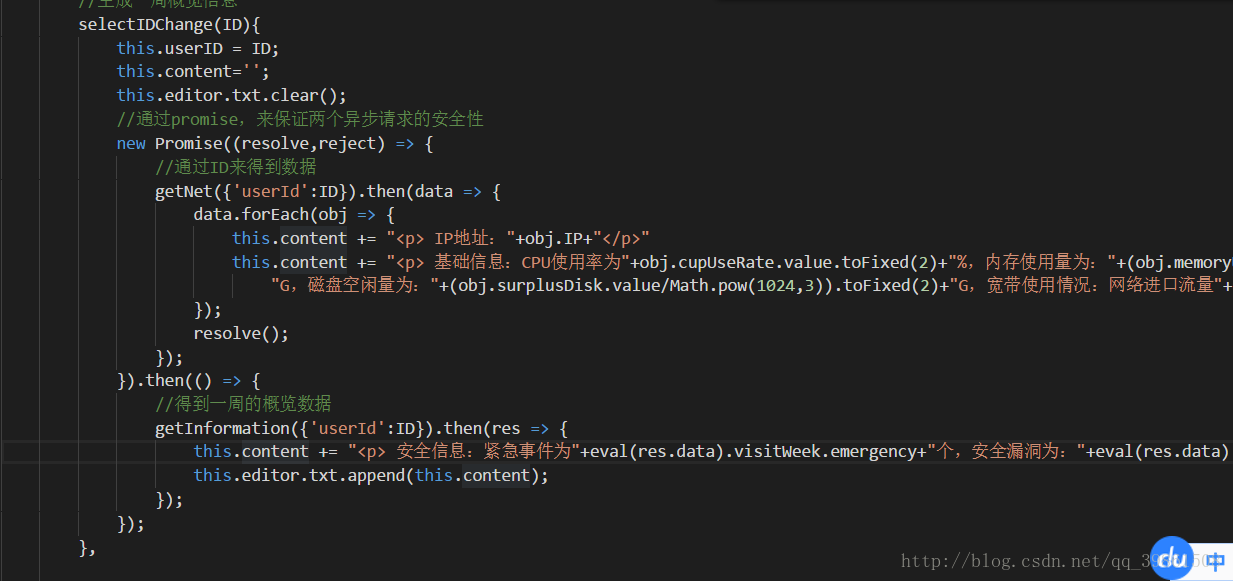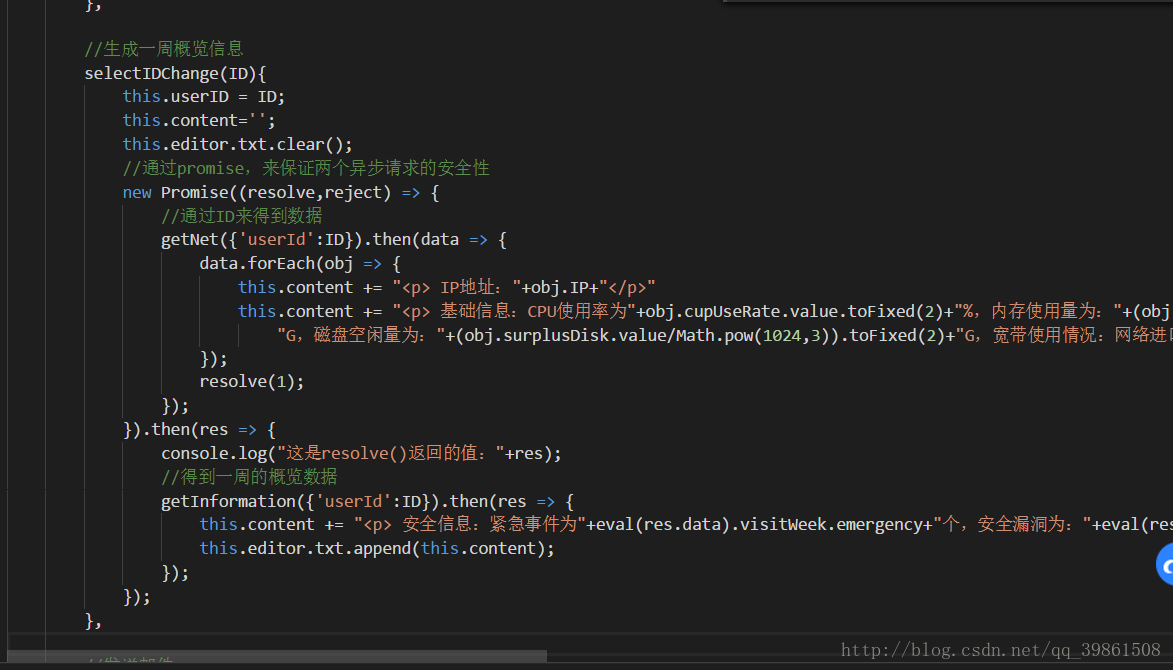在一个页面中,有时会遇到多个ajax请求 同时发生,这样不能保证它们的运行顺序,会导致数据出错,
如果有loading动画时,你不能保证哪个请求先完成,来结束动画。
如果两个数据有关联,必须先完成哪个再执行下一个,可以这样来操作。

可以看到上面的代码是一个相对简单的promise结构。
我们先new promise,在参数列表有两个参数,一个resolve一个rejects。通俗的来讲,
resolve相当于ajax中的success,rejects则就是catch。当然,这两个单词可以随便取,也可以在参数列表写上a,b。但是他们代表的意思是一模一样的。在后面我们可以看到一行代码“resolve()”,这就相当于return。
在promise里面的代码块会最先执行,然后resolve(),接着会运行then里面的方法。
在then里面也有参数,()=> {/代码块/},因为我在上面代码中resolve()的括号中并没有写参数,所以可以看成它返回的是一个空的结果集,所以我在then后面有()来接受,因为是空结果集,所以我用()来接收。
当然你也可以返回想要的结果,打个比方,我把代码改成下面这样

我让resolve返回了一个值,然后在then里面打印出来。

可以看到,res被打印出来就是返回的值1。
Promise.all() :
created(){ this.init() }, methods: { init () { this.$store.dispatch('setLoading', true) const Ajax = new Promise((resolve, reject) => { getAllRecruiter().then(res => { this.recruiter.option = res.data this.recruiter.val = res.data[0] resolve(res) // 请求成功后,利用resolve改变promise状态,并且作为返回值传回到promise对象 }).catch((err) => { reject(err); // 请求失败则利用reject改变状态,终止当前函数流 }) }) const Ajax0 = new Promise((resolve, reject) => { getAllEmploymentType().then(res => { this.employmentType.option = res.data resolve() }).catch(() => { }) }) const Ajax1 = new Promise((resolve, reject) => { getAllLevel().then(res => { this.careerLevel.option = res.data resolve() }).catch(() => { }) }) const Ajax2 = new Promise((resolve, reject) => { getAllBenefit().then(res => { this.benefits.option = res.data resolve() }).catch(() => { }) }) Promise.all([Ajax, Ajax0, Ajax1, Ajax2]).then(() => { //所有请求都成功后执行函数 this.getOldData() }).catch(() => { //// 异常处理 this.$store.dispatch('setLoading', false) }) } }
-----------------------------
部分文章来自:https://blog.csdn.net/qq_39861508/article/details/78925118